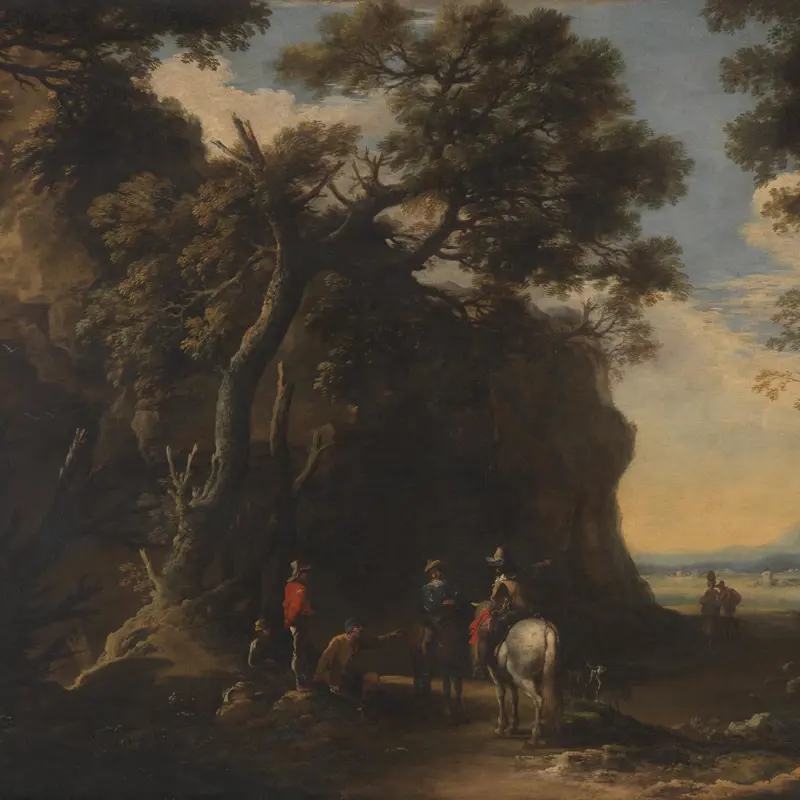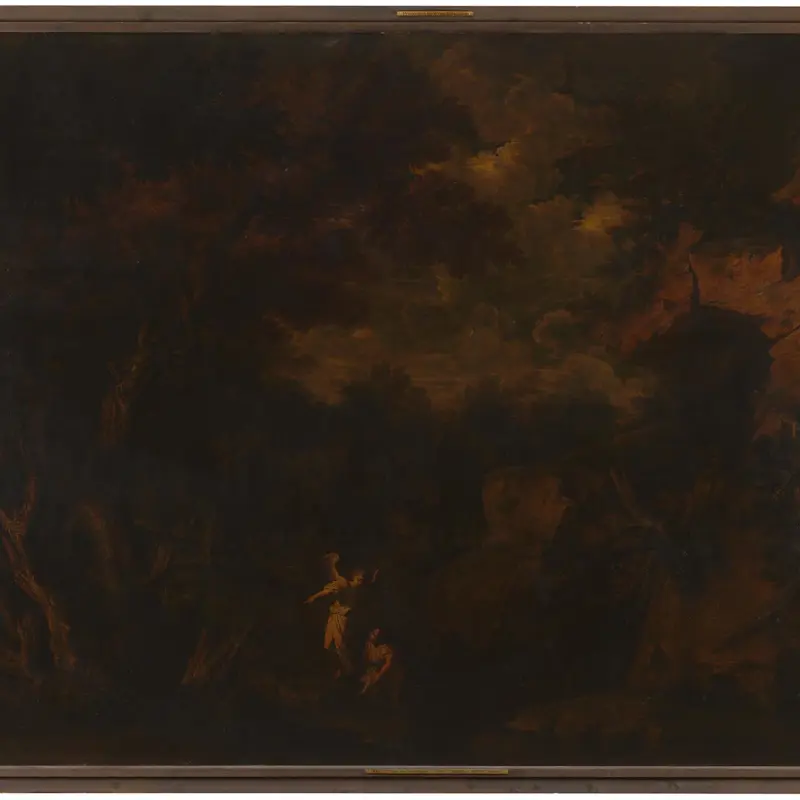Salvator Rosa, 'Landscape with Mercury and the Dishonest Woodsman', about 1663
About the work
Overview
The story of the honest woodsman – the subject of Rosa’s painting – is taken from Aesop’s Fables, a collection of moral tales from ancient Greece. In the story, the god Mercury takes pity on a woodsman who has accidentally dropped his axe into a river. He retrieves two axes from the water, one gold and one silver; the honest woodsman claims neither as his own, so Mercury gives him both as a reward, as well as his original axe. On hearing this, a dishonest woodsman swears that he too has dropped a tool in the water. Rosa’s painting shows Mercury emerging from the river holding a golden axe, and the woodsman dashing forwards to claim it. The god denied him the axe.
This painting was commissioned in around 1663 by Lorenzo Onofrio Colonna, a major art collector in Rome. During the 1660s, Rosa’s landscapes became increasingly dramatic, with windswept trees, rushing torrents of water and stormy clouds. His paintings of this period are among his most powerfully inventive works.
Key facts
Details
- Full title
- Landscape with Mercury and the Dishonest Woodsman
- Artist
- Salvator Rosa
- Artist dates
- 1615 - 1673
- Date made
- About 1663
- Medium and support
- Oil on canvas
- Dimensions
- 125.7 × 202.1 cm
- Acquisition credit
- Bought, 1837
- Inventory number
- NG84
- Location
- Room 32
- Collection
- Main Collection
- Previous owners
- Frame
- 17th-century Italian Frame
Provenance
Additional information
Text extracted from the ‘Provenance’ section of the catalogue entry in Michael Levey, ‘National Gallery Catalogues: The Seventeenth and Eighteenth Century Italian Schools’, London 1986; for further information, see the full catalogue entry.
Exhibition history
-
2010Salvator Rosa (1615 - 1673): Bandits, Wilderness and MagicDulwich Picture Gallery15 September 2010 - 28 November 2010Kimbell Art Museum12 December 2010 - 27 March 2011
-
2023Masterpieces from the National GalleryShanghai Art Museum East17 January 2023 - 7 May 2023National Museum of Korea2 June 2023 - 9 October 2023Hong Kong Palace Museum22 November 2023 - 11 April 2024Chimei Museum2 May 2024 - 1 September 2024
Bibliography
-
1986Levey, Michael, National Gallery Catalogues: The Seventeenth and Eighteenth Century Italian Schools, London 1986
-
2001
C. Baker and T. Henry, The National Gallery: Complete Illustrated Catalogue, London 2001
About this record
If you know more about this work or have spotted an error, please contact us. Please note that exhibition histories are listed from 2009 onwards. Bibliographies may not be complete; more comprehensive information is available in the National Gallery Library.











